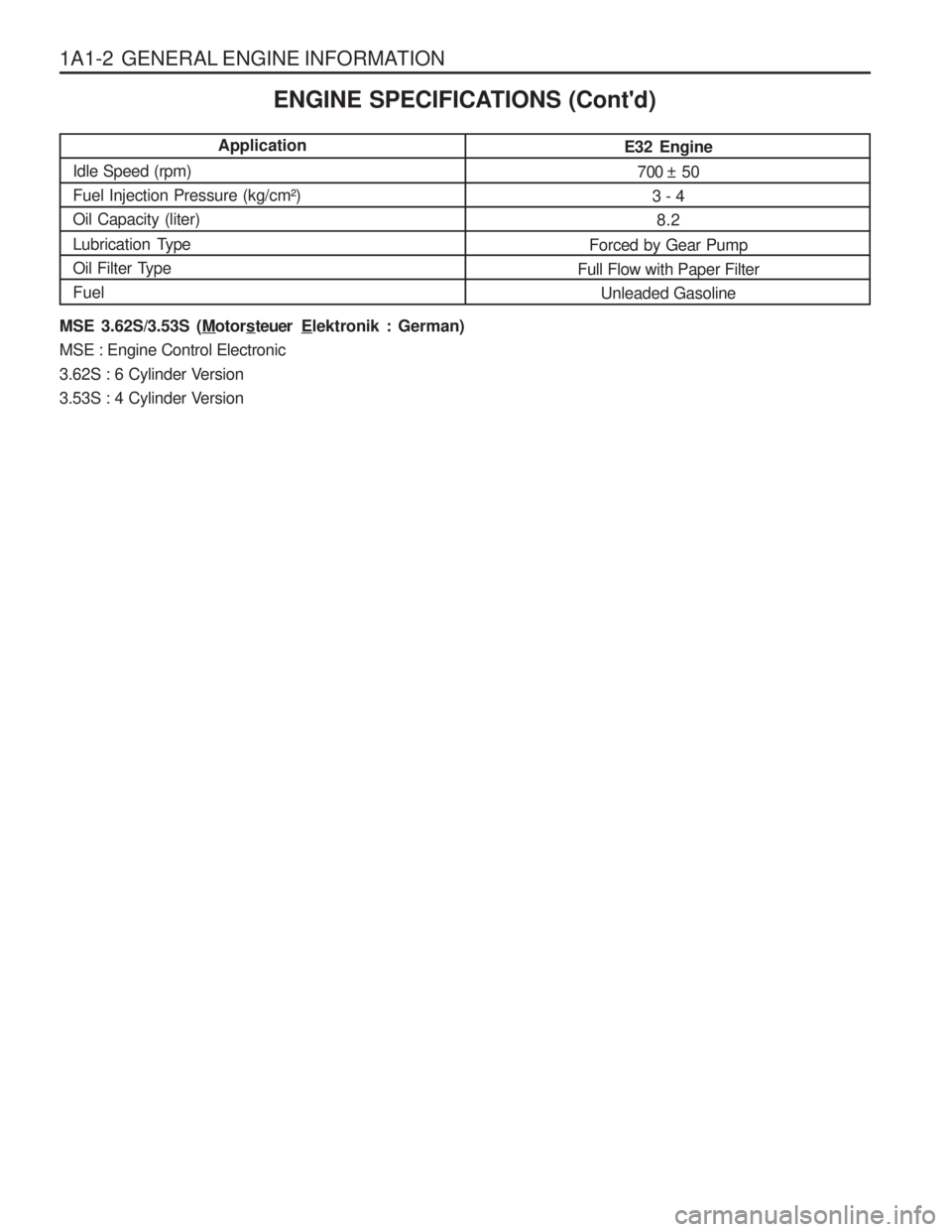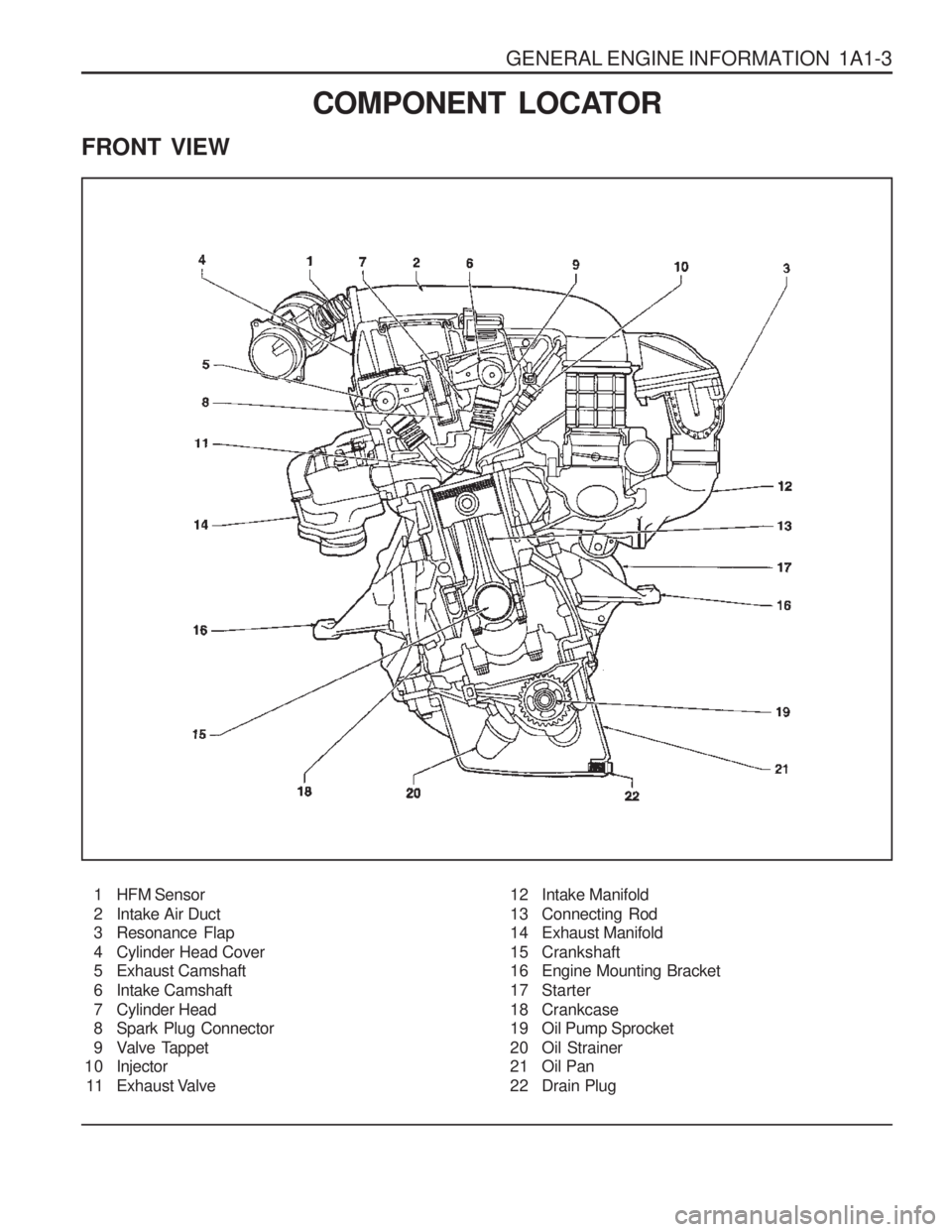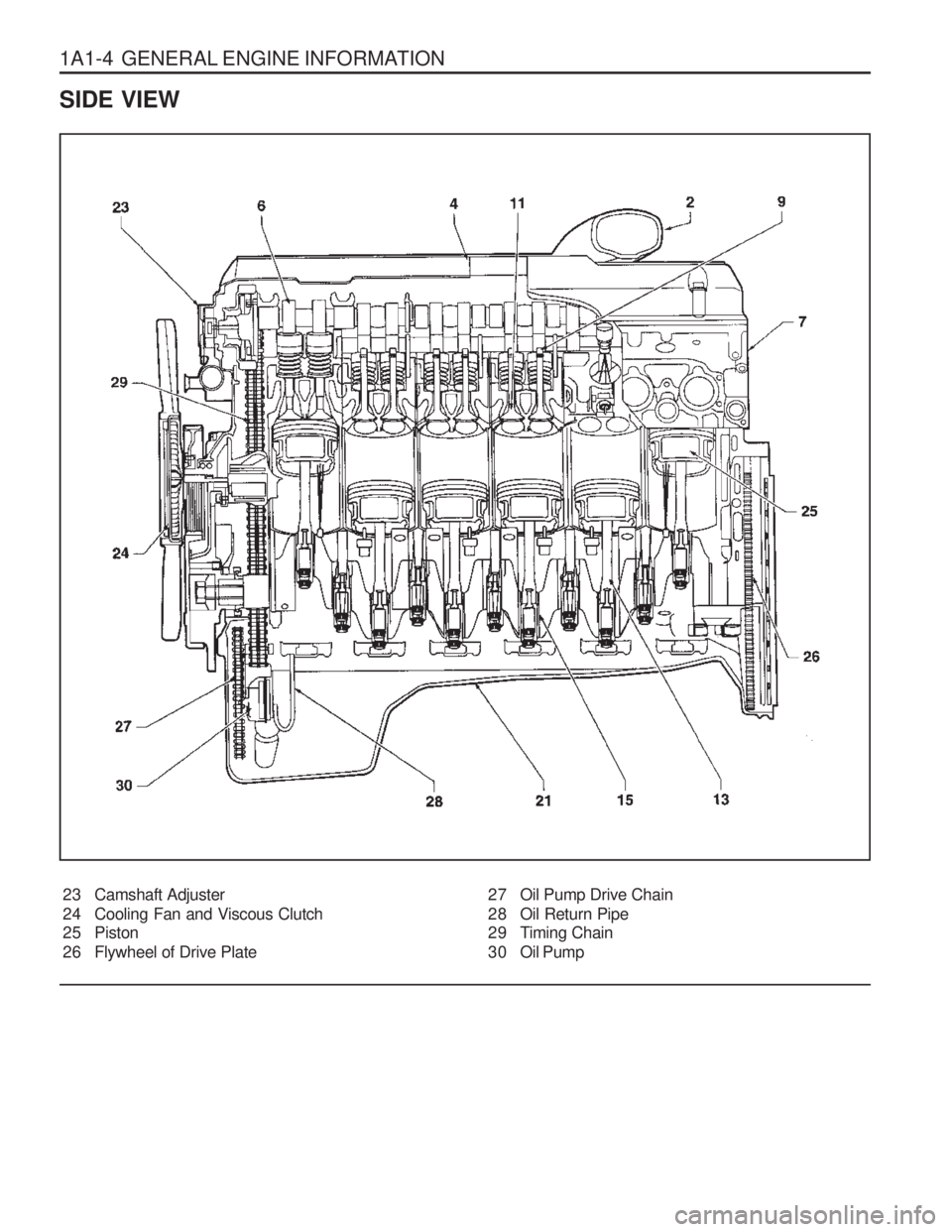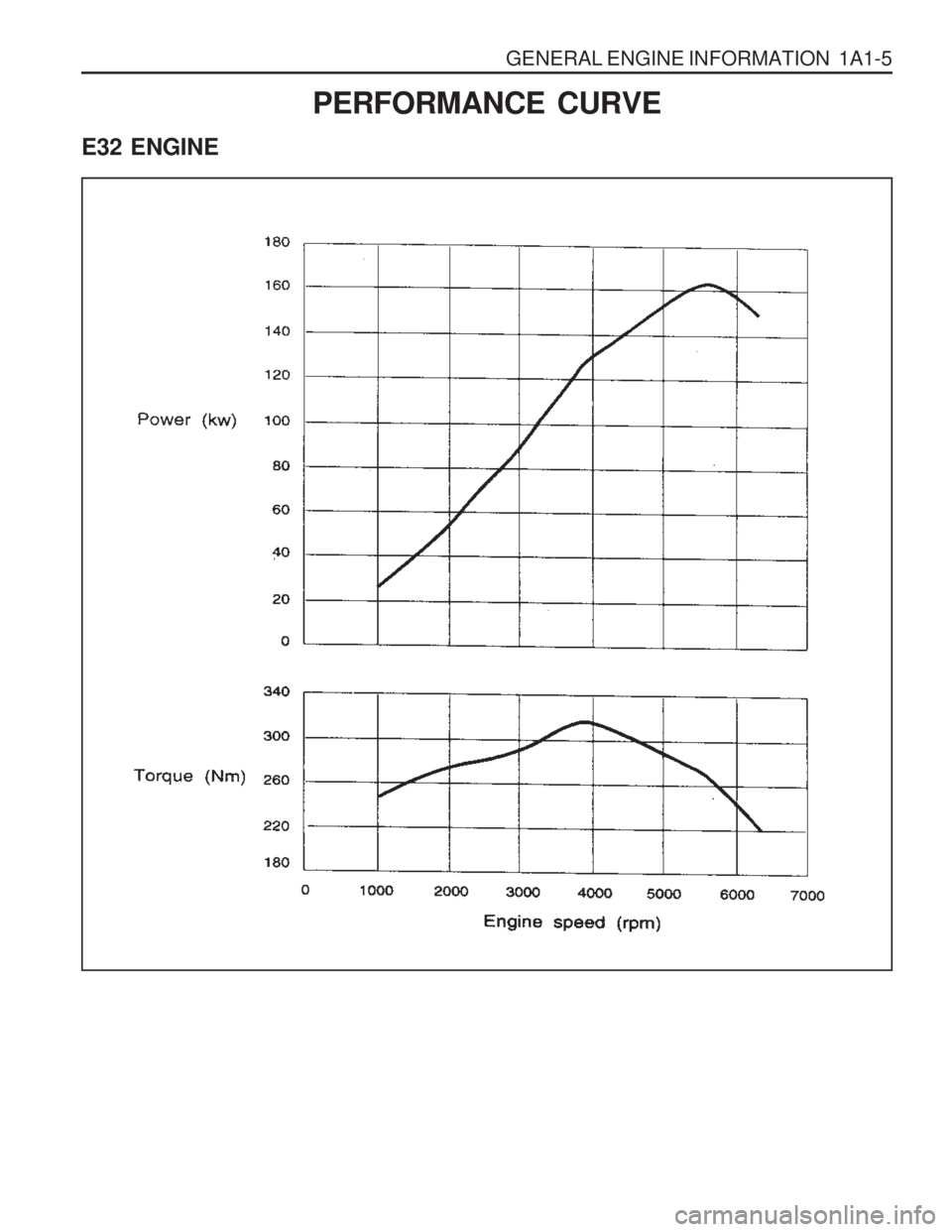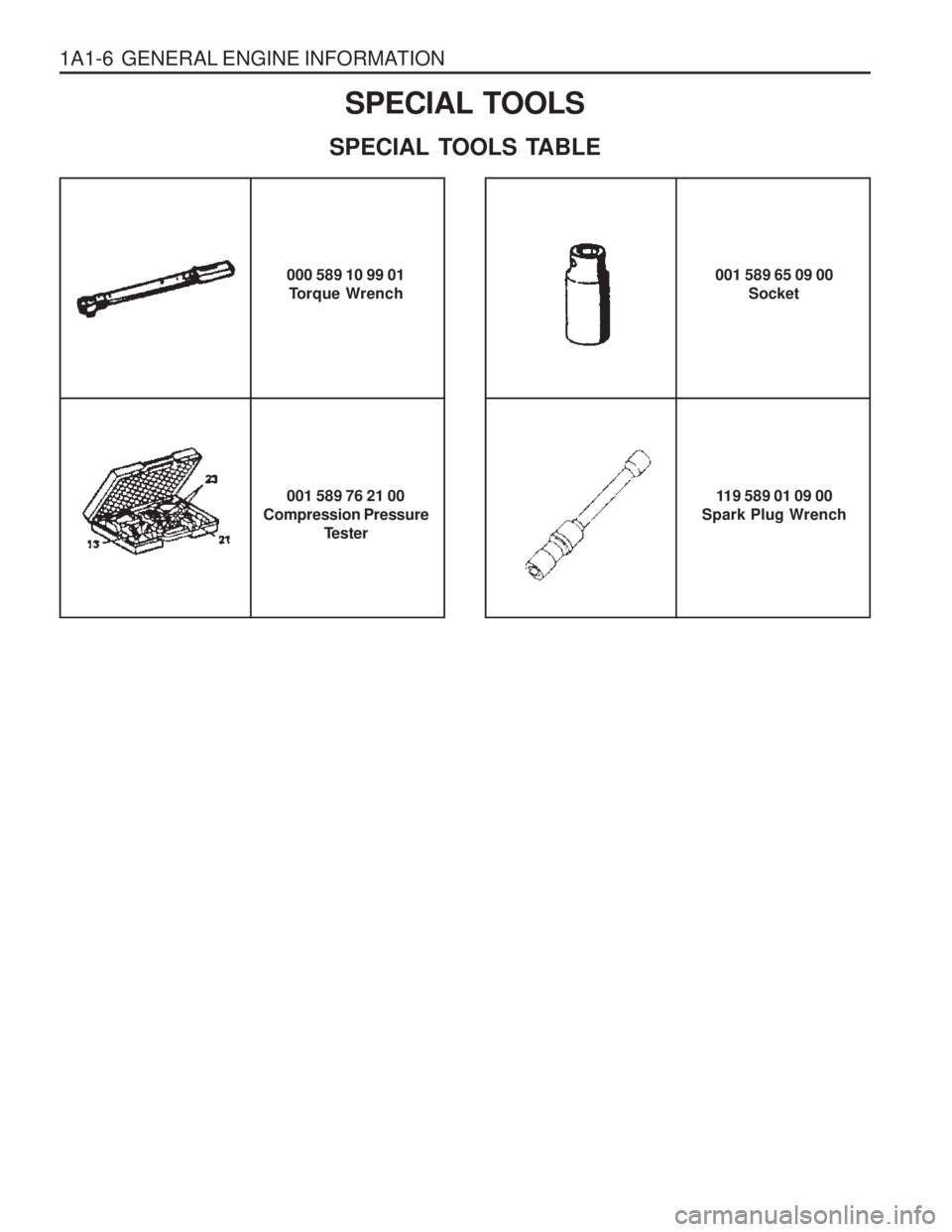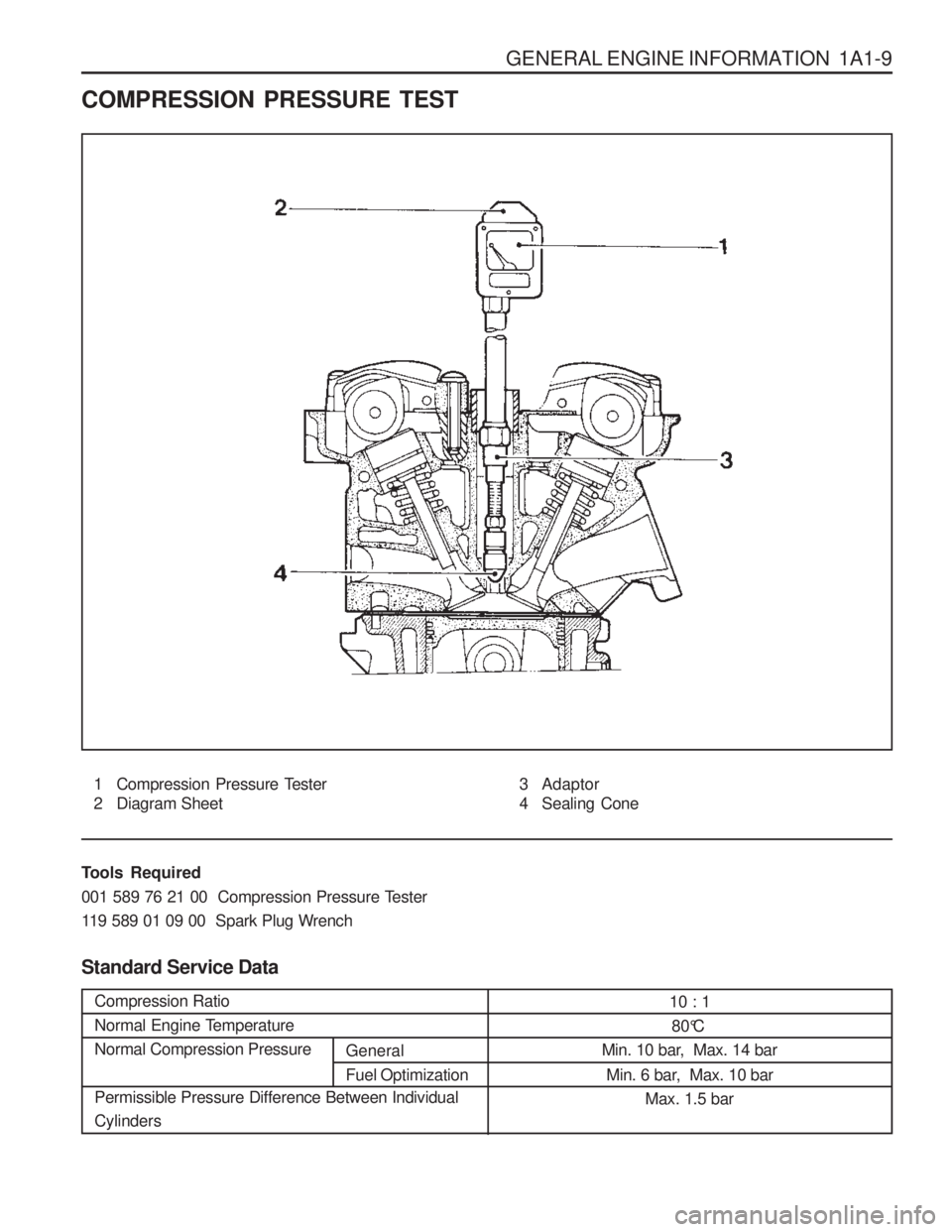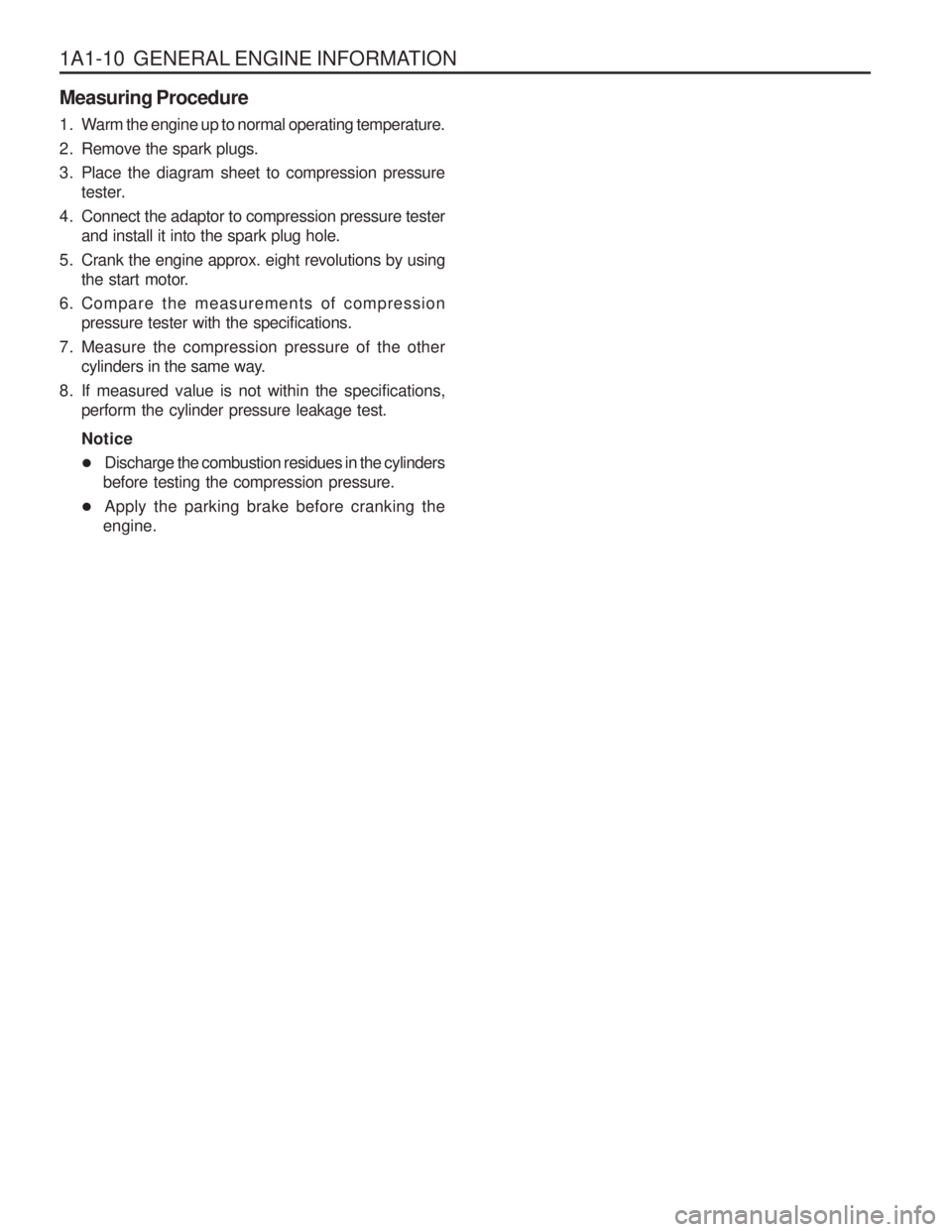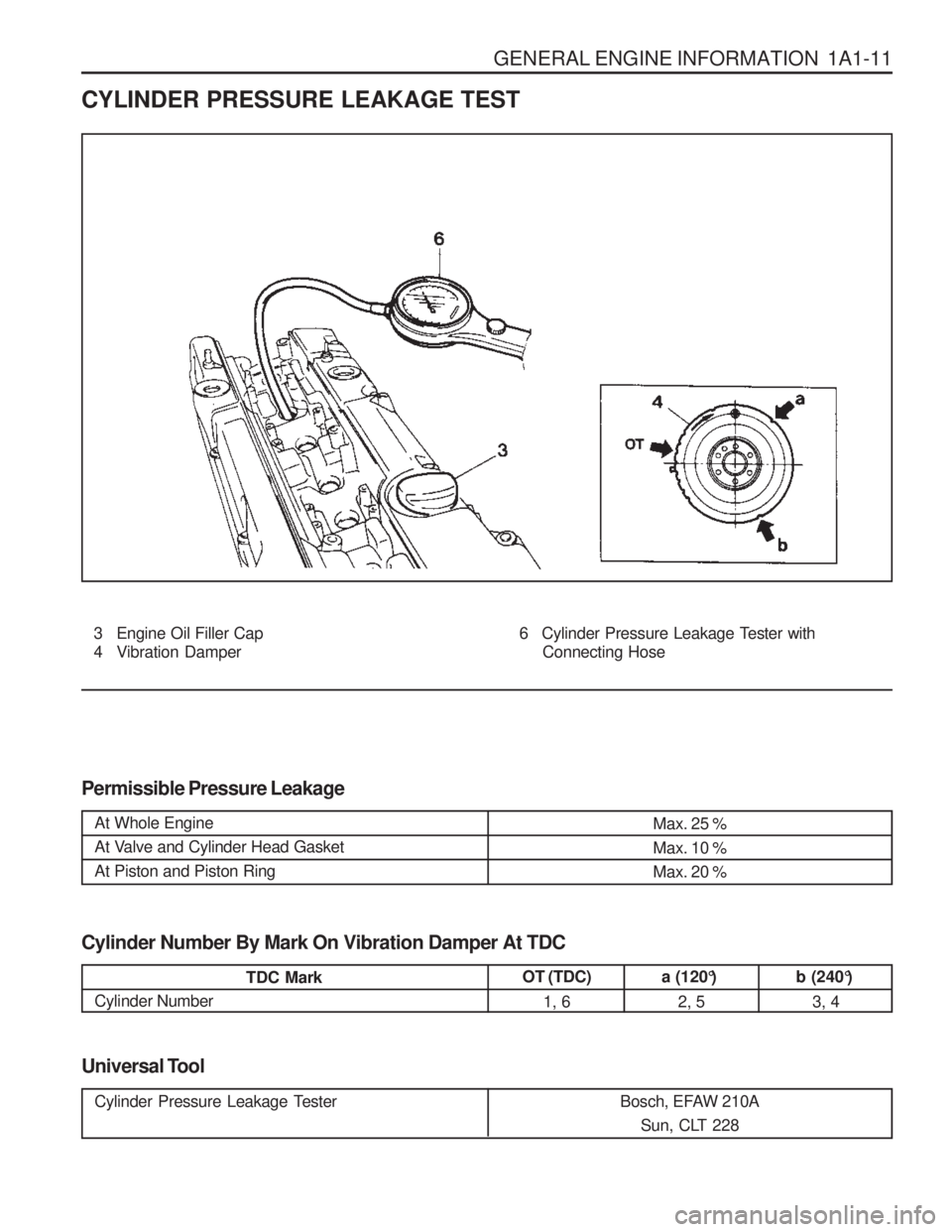SSANGYONG MUSSO 2003 Owner's Manual
MUSSO 2003
SSANGYONG
SSANGYONG
https://www.carmanualsonline.info/img/67/57511/w960_57511-0.png
SSANGYONG MUSSO 2003 Owner's Manual
Trending: fuel type, air conditioning, glove box, four wheel drive, fuel filter, oil level, coolant reservoir
Page 21 of 1574
1A1-2 GENERAL ENGINE INFORMATION
Application
Idle Speed (rpm)
Fuel Injection Pressure (kg/cm²)Oil Capacity (liter)
Lubrication Type
Oil Filter TypeFuel ENGINE SPECIFICATIONS (Cont'd)
E32 Engine7 00 ± 5 0 3 - 48.2
Forced by Gear Pump
Full Flow with Paper Filter
Unleaded Gasoline
MSE 3.62S/3.53S (Motors teuer Elektronik : German)
MSE : Engine Control Electronic
3.62S : 6 Cylinder Version
3.53S : 4 Cylinder Version
Page 22 of 1574
GENERAL ENGINE INFORMATION 1A1-3
COMPONENT LOCATOR
FRONT VIEW
1 HFM Sensor
2 Intake Air Duct
3 Resonance Flap
4 Cylinder Head Cover
5 Exhaust Camshaft
6 Intake Camshaft
7 Cylinder Head
8 Spark Plug Connector
9 Valve Tappet
1 0 Injector
11 Exhaust Valve 12 Intake Manifold
13 Connecting Rod
14 Exhaust Manifold
15 Crankshaft
16 Engine Mounting Bracket
17 Starter
18 Crankcase
19 Oil Pump Sprocket
20 Oil Strainer
21 Oil Pan
22 Drain Plug
Page 23 of 1574
1A1-4 GENERAL ENGINE INFORMATION
23 Camshaft Adjuster
24 Cooling Fan and Viscous Clutch
25 Piston
26 Flywheel of Drive Plate27 Oil Pump Drive Chain
28 Oil Return Pipe
29 Timing Chain
30 Oil Pump
SIDE VIEW
Page 24 of 1574
GENERAL ENGINE INFORMATION 1A1-5
PERFORMANCE CURVE
E32 ENGINE
Page 25 of 1574
1A1-6 GENERAL ENGINE INFORMATIONSPECIAL TOOLS
SPECIAL TOOLS TABLE
000 589 10 99 01 Torque Wrench
001 589 76 21 00
Compression Pressure Tester 119 589 01 09 00
Spark Plug Wrench 001 589 65 09 00
Socket
Page 26 of 1574

GENERAL ENGINE INFORMATION 1A1-7
OIL LEAK DIAGNOSIS Most fluid oil leaks are easily located and repaired by visually finding the leak and replacing or repairing thenecessary parts. On some occasions a fluid leak may
be difficult to locate or repair. The following proceduresmay help you in locating and repairing most leaks. Finding the Leak
1. Identify the fluid. Determine whether it is engine oil,automatic transmission fluid, power steering fluid, etc.
2. Identify where the fluid is leaking from. 2.1 After running the vehicle at normal operating temperature, park the vehicle over a large sheet
of paper.
2.2 Wait a few minutes.
2.3 You should be able to find the approximate location of the leak by the drippings on the
paper.
3. Visually check around the suspected component. Check around all the gasket mating surfaces forleaks. A mirror is useful for finding leaks in areas thatare hard to reach.
4. If the leak still cannot be found, it may be necessary to clean the suspected area with a degreaser, steamor spray solvent.
4.1 Clean the area well.
4.2 Dry the area.
4.3 Operate the vehicle for several miles at normal operating temperature and varying speeds.
4.4 After operating the vehicle, visually check the suspected component.
4.5 If you still cannot locate the leak, try using the powder or black light and dye method.
Powder Method
1. Clean the suspected area.
2. Apply an aerosol-type powder (such as foot powder) to the suspected area.
3. Operate the vehicle under normal operating conditoins.
4. Visually inspect the suspected component. You should be able to trace the leak path over the white powder surface to the source.
Black Light and Dye Method A dye and light kit is available for finding leaks, Refer to the manufacturer's directions when using the kit.
1. Pour the specified amount of dye into the engine oil fill tube. 2. Operate the vehicle normal operating conditions as
directed in the kit.
3. Direct the light toward the suspected area. The dyed fluid will appear as a yellow path leading to the source.
Repairing the Leak Once the origin of the leak has been pinpointed and traced back to its source, the cause of the leak must be
determined n order for it to be repaired properly. If agasket is replaced, but the sealing flange is bent, the new gasket will not repair the leak. The bent flange must be repaired also. Before attempting to repair a leak,check for the following conditions and correct them asthey may cause a leak. Gaskets
� The fluid level/pressure is too high.
� The crankcase ventilation system is malfunctioning.
� The fasteners are tightened improperly or the threads are dirty or damaged.
� The flanges or the sealing surface is warped.
� There are scratches, burrs or other damage to thesealing surface.
� The gasket is damaged or worn.
� There is cracking or porosity of the component.
� An improper seal was used (where applicable).
Seals
� The fluid level/pressure is too high.
� The crankcase ventilation system is malfunctioning.
� The seal bore is damaged (scratched, burred or nicked).
� The seal is damaged or worn.
� Improper installation is evident.
� There are cracks in the components.
� The shaft surface is scratched, nicked or damaged.
� A loose or worn bearing is causing excess seal wear.
DIAGNOSIS
Page 27 of 1574
1A1-8 GENERAL ENGINE INFORMATION
ENGINE CRANKING AT THE FRONT OF CRANKSHAFT Preceding Work : Removal of cooling fan
1 Vibration Damper Assembly
2 Crankshaft Pulley
Notice
� Remove the negative ground cable before proceeding the work.
� Rotate the pulley in normal engine rotating direction when cranking. 3 Bolt
................................................. 8.6 ± 0.9 Nm
Tools Required
000 589 10 99 01 Torque wrench001 589 65 09 00 Socket
Page 28 of 1574
GENERAL ENGINE INFORMATION 1A1-9
COMPRESSION PRESSURE TEST
1 Compression Pressure Tester
2 Diagram Sheet3 Adaptor
4 Sealing Cone
Tools Required
001 589 76 21 00 Compression Pressure Tester
119 589 01 09 00 Spark Plug Wrench Standard Service Data
Compression Ratio
Normal Engine TemperatureNormal Compression Pressure Permissible Pressure Difference Between Individual Cylinders
10 : 180°C
Min. 10 bar, Max. 14 bar
Min. 6 bar, Max. 10 bar Max. 1.5 bar
General Fuel Optimization
Page 29 of 1574
1A1-10 GENERAL ENGINE INFORMATION Measuring Procedure
1. Warm the engine up to normal operating temperature.
2. Remove the spark plugs.
3. Place the diagram sheet to compression pressuretester.
4. Connect the adaptor to compression pressure tester and install it into the spark plug hole.
5. Crank the engine approx. eight revolutions by using the start motor.
6. Compare the measurements of compression pressure tester with the specifications.
7. Measure the compression pressure of the other cylinders in the same way.
8. If measured value is not within the specifications, perform the cylinder pressure leakage test. Notice
� Discharge the combustion residues in the cylinders
before testing the compression pressure.
� Apply the parking brake before cranking the
engine.
Page 30 of 1574
GENERAL ENGINE INFORMATION 1A1-11
CYLINDER PRESSURE LEAKAGE TEST
3 Engine Oil Filler Cap
4 Vibration Damper
Permissible Pressure Leakage 6 Cylinder Pressure Leakage T
ester with
Connecting Hose
Universal Tool
At Whole Engine
At Valve and Cylinder Head GasketAt Piston and Piston RingMax. 25 % Max. 10 %Max. 20 %
Cylinder Number By Mark On Vibration Damper At TDC
TDC Mark
Cylinder Numberb (240°)
3, 4a (120°)2, 5
OT (TDC)
1, 6
Cylinder Pressure Leakage Tester Bosch, EFAW 210A
Sun, CLT 228
Trending: washer fluid, Blower motor, battery, check engine, clock, tires, power steering
